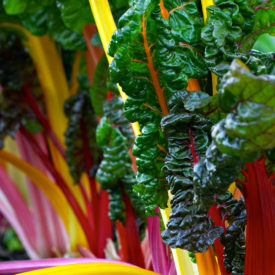
Papaya is native to the tropics of the Americas in the regions of southern Mexico and Central America. The papaya is a tree-like plant that can grow over 30 feet tall. The fruit is a type of berry and when ripe it feels soft and the skin turns an amber to orange hue.
Papaya plants grow in three sexes: male, female, and hermaphrodite. The male produces only pollen, never fruit. The female will produce small, inedible fruits unless pollinated. The hermaphrodite can self-pollinate because its flowers contain both male stamens and female ovaries. As a result almost all commercial papaya orchards contain only hermaphrodite papaya plants.
In 1998, in response to the papaya ringspot virus (PRV) outbreak in Hawaii, genetically altered papaya were approved and brought to market (including ‘SunUp’ and ‘Rainbow’ varieties.) Varieties resistant to PRV have some DNA of this virus incorporated into the DNA of the plant.
Preparation:
Papayas are often eaten raw. The fruit is cut in half and the seeds removed. The flesh can be scooped out or cut into wedges.
Farms that grow papaya:
Kumu Farms
Lokoea Farms
What else is in the bag?
Try out these recipes!









